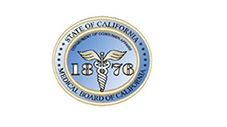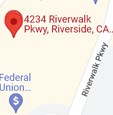Robotic Lung Surgery
Lung cancer is the leading cause of death due to cancer. It is mainly caused by smoking and develops in the cells that line the airways (bronchi) or air sacs (alveoli). It can spread to the lymph nodes, bone, liver and other organs. There are several types of lung cancer, the most common being adenocarcinoma or squamous cell carcinoma. Treatment is decided based on the type, size and location of the lung tumor and how far cancer has spread to the rest of the body.
Cancer that has not spread far may be treated by surgery. This usually involves removal of a part of the lung, a lobe of the lung (lobectomy) or the entire lung on one side (pneumonectomy) as well as affected lymph nodes.
Lung surgery used to be performed by making a large incision over the chest, cutting through bone or spreading the ribs. However, due to advances in technology, it may now be performed in a minimally invasive manner with the help of robotic assistance.
With robotic lung surgery, your surgeon makes a few small 1 cm incisions in the rib space through which surgery such as a lobectomy can be performed, without spreading or cutting the breastbone or ribs.
Your surgeon uses the da Vinci® Surgical System, a robotic device to access the chest cavity and perform the procedure through the small incisions. The da Vinci robotic system is among the most effective and least invasive techniques for a faster recovery with minimal pain, blood loss and scarring as well as fewer risks when compared to traditional open surgery.
The da Vinci surgical system consists of a surgeon's console, a patient-side cart with four interactive robotic arms, a high-performance vision system (3D camera) and miniaturized EndoWrist surgical instruments.
While performing the surgical procedure, your surgeon will be seated at the da Vinci console to view a magnified, high-resolution 3D image of the area to be operated. Your surgeon would then introduce miniaturized EndoWrist instruments through the tiny incisions to access the surgical site. These instruments help your surgeon perform the procedure with precision and control. Master controls help your surgeon translate hand movements to smaller precise movements of the miniaturized instruments.
FAQs
What is robotic-assisted lung surgery?
Robotic-assisted lung surgery is a minimally invasive procedure to treat lung cancer. Your doctor performs surgery through small incisions with the help of robotic arms that improve accuracy and dexterity.
How is robotic surgery performed?
A few small keyhole incisions are made and a video camera and instruments are passed through these to visualize and access the site of surgery. The instruments are held by precisely-controlled robotic arms which your doctor operates at a console in the operating room. The video camera provides a 3D view and the robotic arms can be maneuvered in various directions so that surgery is performed with a high level of accuracy.
What are the benefits of robotic-assisted lung surgery?
The benefits of robotic assisted lung surgery include:
- Less tissue trauma (no cutting or spreading ribs)
- Less pain and bleeding
- Better visualization
- Better instrument control
- Fewer complications
- Faster recovery
Am I a candidate for robotic-assisted lung surgery?
Your doctor will take many factors into consideration including the extent of your disease and your overall health to decide whether you are a candidate for this kind of procedure.
What are the risks associated with robotic lung surgery?
Complications with robotic lung surgery are less when compared to traditional surgery but potential risks include tissue damage, lung leakage, bleeding, infection and even death. In some cases, conversion to an open surgery may be necessary.



















